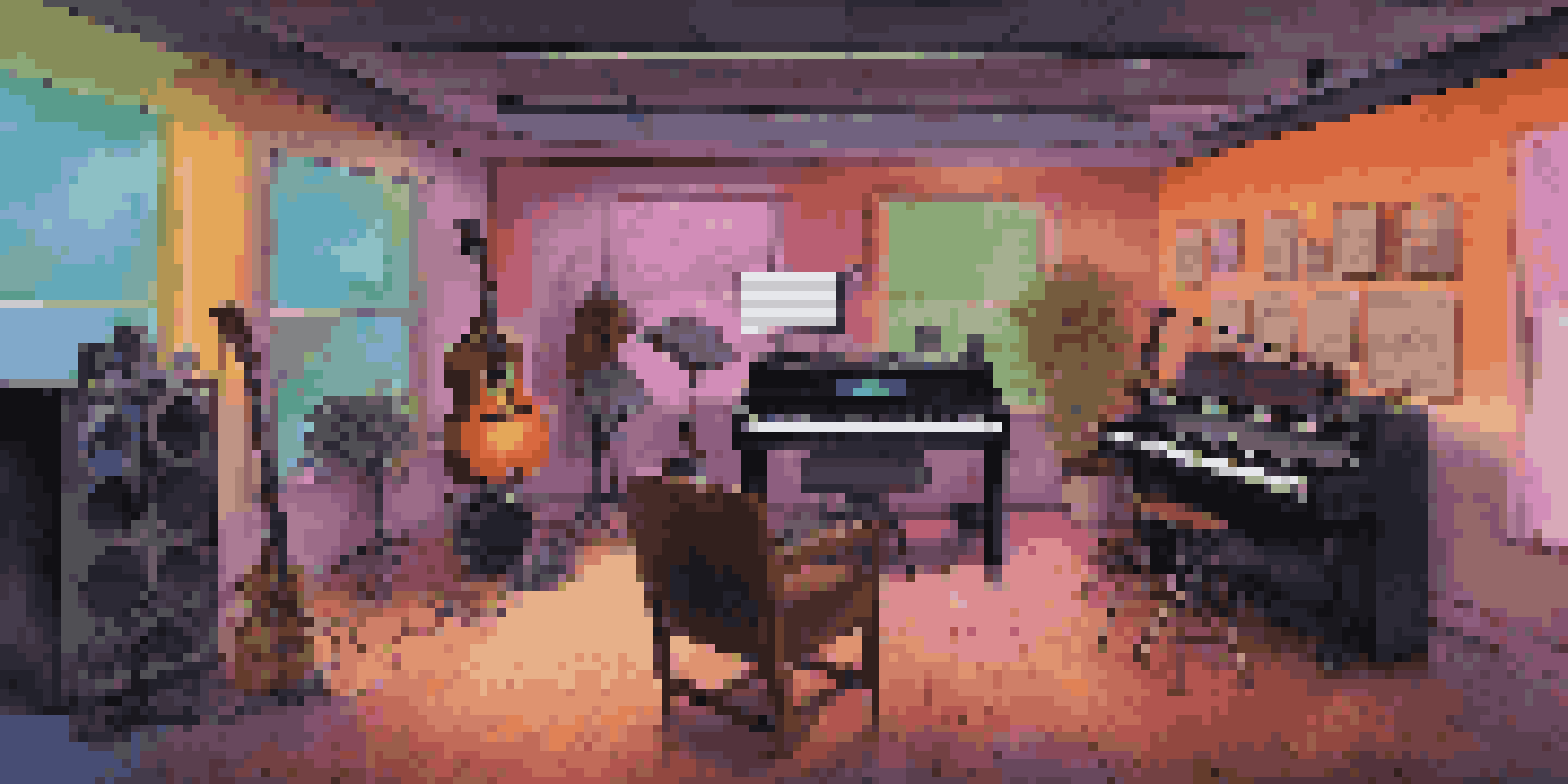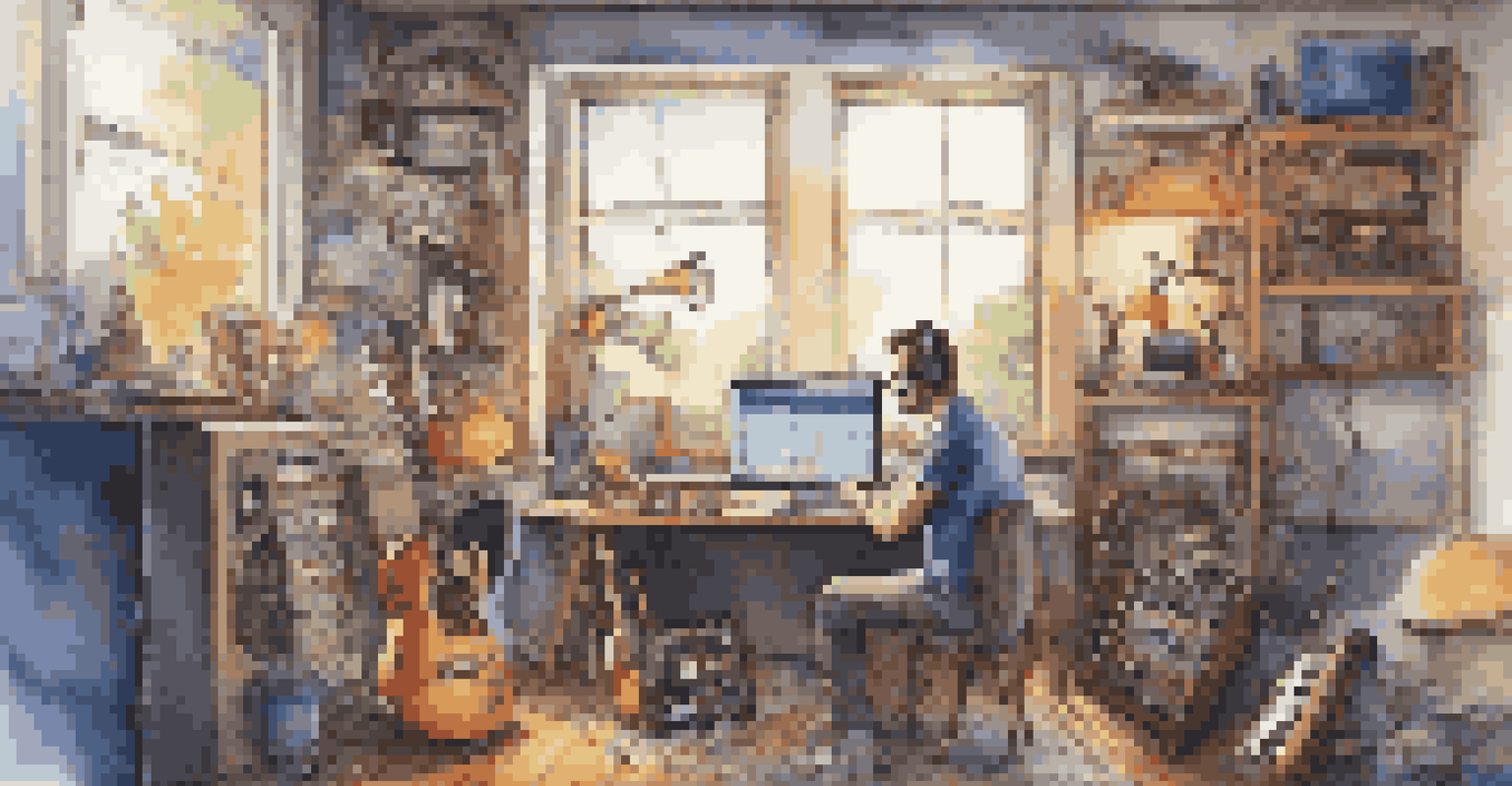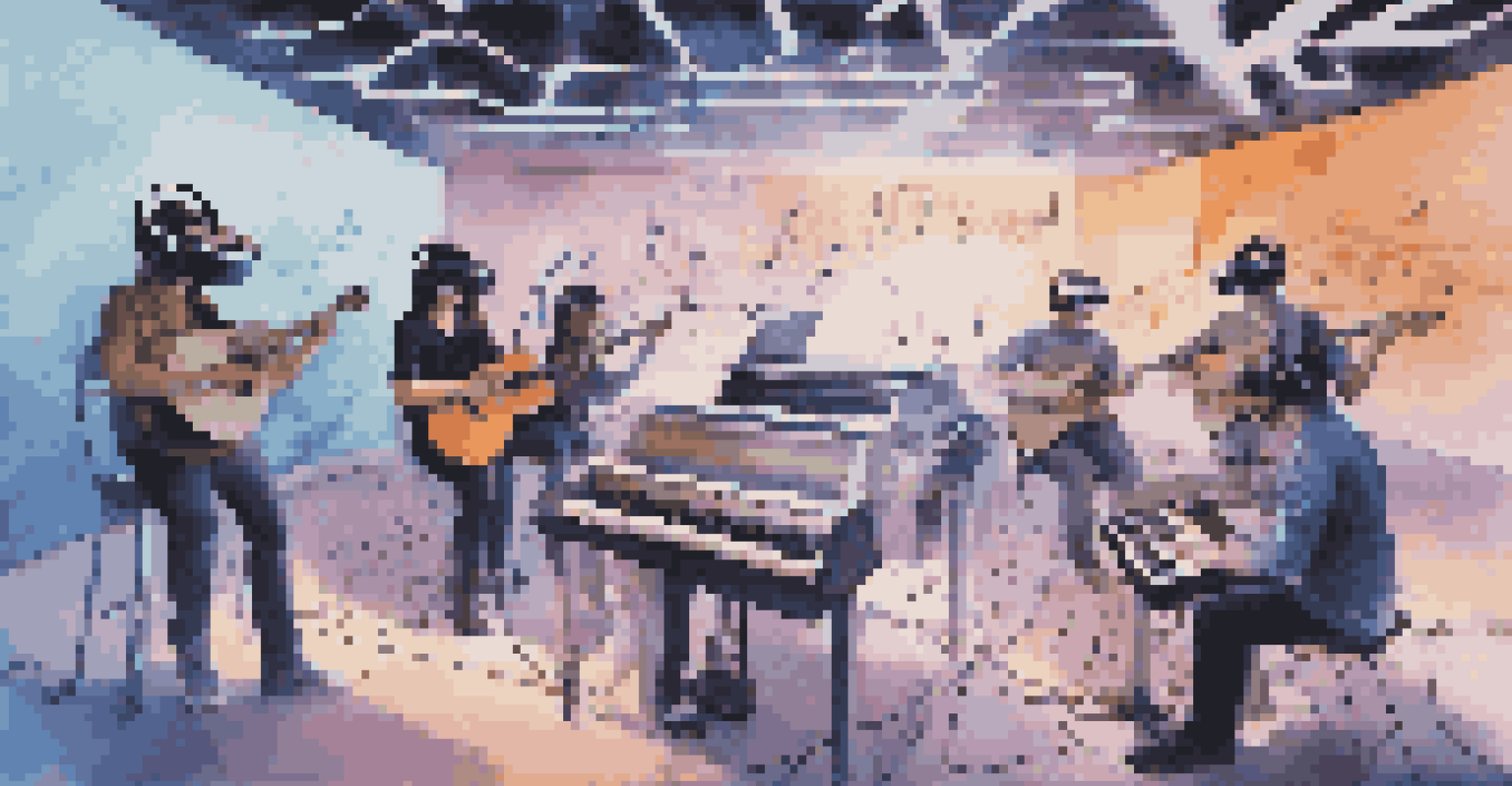The Role of Collaboration Software in Modern Songwriting

Understanding Collaboration Software in Songwriting
Collaboration software encompasses various digital tools designed to facilitate teamwork, especially in creative fields like songwriting. These platforms enable artists to share ideas, lyrics, and melodies in real time, regardless of their physical location. Imagine a virtual songwriting room where musicians can brainstorm, edit, and refine their work together, all from the comfort of their own homes. This technology has revolutionized the way songwriters interact, making the creative process more inclusive and efficient.
Alone we can do so little; together we can do so much.
One popular example of collaboration software is Google Docs, where multiple users can edit a document simultaneously. Writers can leave comments, suggest changes, and track revisions, allowing for seamless communication. Alternatively, platforms like Soundtrap or Splice let musicians collaborate on audio tracks directly, making it feel like they’re in the same studio. This flexibility not only enhances creativity but also nurtures a sense of community among songwriters.
Overall, collaboration software serves as a bridge that connects artists from different backgrounds and geographical locations. It's not just about sharing files; it's about fostering relationships and encouraging a flow of ideas that can lead to innovative songwriting. In a world where music knows no boundaries, these tools empower songwriters to create together, even when they’re apart.
Enhancing Creativity Through Remote Collaboration
Collaboration software is more than just a means of communication; it’s a catalyst for creativity. When songwriters collaborate remotely, they often bring diverse perspectives and influences to the table, which can spark new ideas. For instance, a country artist might team up with a pop songwriter to blend genres, creating a fresh sound that resonates with a wider audience. This mixing of styles can lead to innovative compositions that might not have emerged in a traditional, in-person setting.

Moreover, remote collaboration allows songwriters to work with artists from different parts of the world. Think of it as a global songwriting circle; a musician in Nashville can write with an artist in London or Tokyo without the need for travel. This not only enriches the songwriting process but also exposes artists to new cultural influences and musical trends. With various time zones, creativity can happen at any hour, allowing for spontaneous bursts of inspiration.
Collaboration Software Boosts Creativity
Remote collaboration tools enable songwriters to blend diverse influences and experiment with new ideas.
Ultimately, the ability to collaborate remotely broadens the horizon for what’s possible in songwriting. It encourages songwriters to step out of their comfort zones and experiment with new ideas. By leveraging collaboration software, artists can push the boundaries of their creativity, resulting in songs that reflect a rich tapestry of influences and experiences.
Streamlining the Songwriting Process
One of the most significant benefits of collaboration software is how it streamlines the songwriting process. Traditionally, songwriters would exchange ideas through email or in-person meetings, which could be time-consuming and inefficient. Now, with tools like Trello or Asana, songwriters can organize their projects, set deadlines, and track progress all in one place. This structured approach helps keep everyone on the same page and ensures that creative momentum isn't lost.
Creativity is intelligence having fun.
Additionally, many collaboration platforms offer features like version control, which allows songwriters to easily revert to previous drafts if needed. This means no more worrying about accidentally losing a brilliant line or melody. Instead, artists can focus on refining their work and building upon it, leading to a more polished final product. The ease of access to past versions makes the creative process less stressful and more enjoyable.
By streamlining communication and organization, collaboration software enables songwriters to maximize their creative output. When administrative tasks are simplified, artists can devote more time to what they love: writing music. This efficiency can lead to increased productivity, allowing songwriters to produce more songs and experiment with different concepts without feeling overwhelmed.
Fostering Collaboration Among Diverse Artists
Collaboration software plays a crucial role in fostering partnerships among artists from diverse backgrounds. In today’s music landscape, cross-genre collaborations are becoming increasingly popular. Platforms like Slack or Discord create spaces where artists can network, share ideas, and find potential collaborators. This sense of community encourages songwriters to explore new musical territories and push creative boundaries.
For example, an indie rock band might team up with an electronic producer to create a unique sound. This kind of collaboration can lead to unexpected results that capture the attention of listeners and critics alike. By collaborating with artists who have different experiences and influences, songwriters can create music that is rich and multi-dimensional. This not only broadens their artistic horizons but also resonates with a diverse audience.
Streamlined Songwriting Process
These tools simplify organization and communication, allowing artists to focus more on creativity and productivity.
Ultimately, collaboration software helps break down barriers and connects artists who may not have met otherwise. It creates opportunities for innovative partnerships that reflect the ever-evolving nature of music. By embracing diversity in collaboration, songwriters can create impactful songs that resonate across various demographics, making their music more relevant and meaningful.
Real-Time Feedback and Iteration
One of the standout features of collaboration software is the ability to receive real-time feedback. This immediacy can significantly enhance the songwriting process, as artists can share their work and get instant reactions from their collaborators. For instance, using platforms like Soundtrap, songwriters can play a track and discuss changes as they listen together, making the creative process dynamic and interactive. This feedback loop can lead to spontaneous adjustments that elevate the quality of the song.
Moreover, real-time collaboration encourages a culture of experimentation. When songwriters can quickly share ideas and receive input, they are more likely to take creative risks. For example, an artist might try out an unconventional lyric or melody, knowing they can immediately gauge the reaction. This collaborative environment fosters innovation, as artists feel empowered to push their creative boundaries without fear of judgment.
In essence, real-time feedback through collaboration software allows for a more agile songwriting process. It transforms feedback from a linear, delayed exchange into an ongoing conversation, helping artists refine their work quickly. This iterative approach can lead to stronger songs that reflect a collective vision, ultimately resulting in music that resonates more deeply with audiences.
Integrating Multimedia Elements in Songwriting
Collaboration software not only facilitates writing lyrics but also enables the integration of multimedia elements into the songwriting process. Tools like BandLab or Audiomack allow musicians to incorporate audio samples, beats, and even visual components into their projects. This multimedia approach can inspire creativity and lead to more dynamic and engaging songs. Imagine writing a song while simultaneously layering in beats or harmonies from a collaborator halfway around the world.
Additionally, the ability to share audio and video files makes it easier for artists to communicate their vision. For instance, a songwriter can record a rough demo and share it instantly with their collaborators for feedback. This immediate access to audio allows for a more nuanced discussion about arrangements and instrumentation. By visualizing their ideas, songwriters can better convey their intentions and ensure everyone is on the same page.
Real-Time Feedback Enhances Songs
Instant feedback during the songwriting process fosters innovation and helps refine ideas quickly.
Overall, integrating multimedia elements through collaboration software enriches the songwriting experience. It encourages artists to think beyond traditional song structures and explore new creative possibilities. By leveraging technology, songwriters can create more immersive and captivating music that engages listeners on multiple levels.
The Future of Songwriting with Collaborative Tools
As technology continues to evolve, so does the landscape of songwriting. The future promises even more advanced collaboration software that will further enhance the creative process. Innovations like artificial intelligence and machine learning can potentially assist songwriters in generating new ideas, suggesting lyrics, or even composing melodies. This integration of AI could serve as a valuable tool, sparking inspiration and elevating the collaborative experience.
Moreover, the rise of virtual reality (VR) and augmented reality (AR) could transform how songwriters collaborate. Imagine donning a VR headset to enter a virtual studio with collaborators from around the globe, working on a song in a shared digital space. Such advancements could create an immersive environment that fosters creativity and community, redefining what it means to collaborate in the music industry.

In conclusion, the role of collaboration software in modern songwriting is just the beginning. As technology continues to advance, songwriters will have even more opportunities to connect, create, and innovate. Embracing these tools not only enhances the songwriting process but also opens doors to a future where collaboration knows no bounds, allowing artists to produce music that reflects their shared experiences and diverse influences.